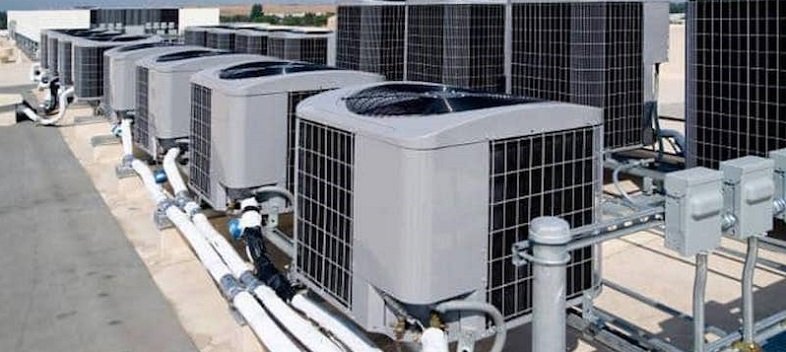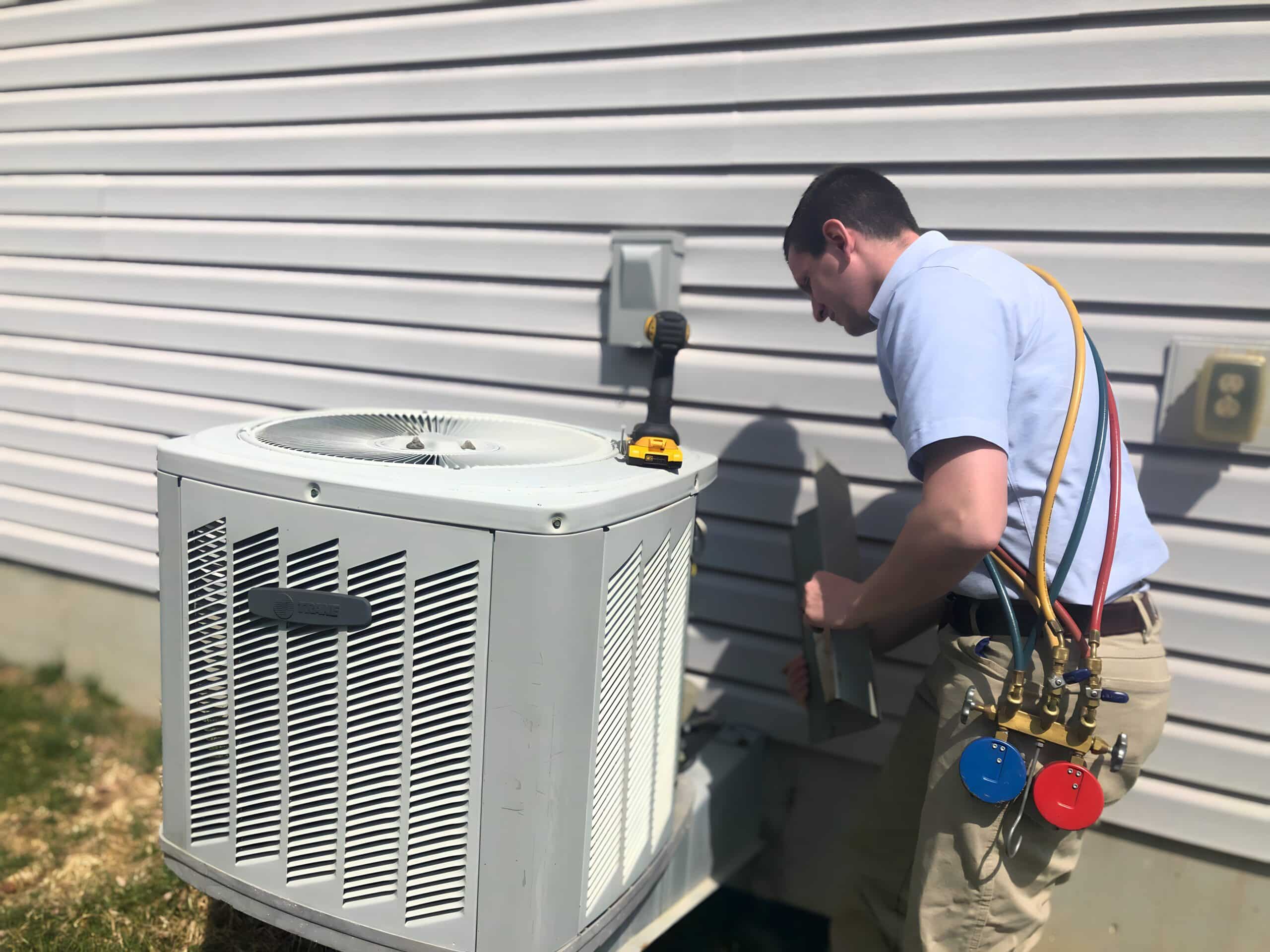A Homeowner’s Guide to Planning a furnace replacement
A Homeowner’s Guide to Planning a furnace replacement
Blog Article
Exactly How a Heatpump and Heating System Interact to Enhance Your Home's Heating Effectiveness
Comprehending just how a heatpump and furnace collaborate is vital for house owners looking for reliable home heating remedies. Each system has its strengths, giving a balanced approach to home comfort. The heatpump excels in modest temperatures, while the heater provides rapid heat during severe cold. This harmony not only lowers power costs yet additionally boosts the life expectancy of both devices. What elements influence this collaboration, and just how can house owners optimize their advantages?
Comprehending Heat Pumps: Exactly How They Function
Although lots of people may be strange with their inner workings, warmth pumps play an essential duty in contemporary home heating systems. These devices operate by moving warmth from one location to another, making use of the concepts of thermodynamics. In cooler months, a warmth pump extracts warm from the outside air, ground, or water, and transfers it inside to warm the space. On the other hand, throughout warmer months, it can turn around the process, working as an a/c by expelling heat from inside to the outside.Heat pumps contain an evaporator, development, compressor, and condenser valve. The refrigerant within the system absorbs warm as it evaporates at reduced temperatures and pressures. The compressor after that enhances the pressure and temperature of the refrigerant, allowing it to release heat as it condenses. This efficient procedure can significantly reduce energy usage contrasted to traditional heating approaches, making warmth pumps a lasting option for environment control in homes.
The Role of Heating Systems in Home Heating
Heaters play a vital duty in home heating by supplying a reliable resource of warmth throughout the cooler months. They run by generating heat through burning or electric resistance, distributing it throughout the home using air ducts or glowing systems. The effectiveness of a heating system is usually determined by its Yearly Fuel Utilization Performance (AFUE) rating, which shows how effectively the unit converts fuel right into heat.Furnaces can use numerous power sources, including all-natural gas, electrical energy, oil, or lp, enabling home owners to choose one of the most appropriate choice for their demands. Unlike warm pumps, which might battle in extreme cool, heaters preserve regular efficiency, guaranteeing that indoor temperatures stay comfortable regardless of outside conditions. Furthermore, modern-day furnaces usually come equipped with advanced innovation, such as variable-speed blowers and clever thermostats, boosting their efficiency and responsiveness. This flexibility makes heaters a crucial component in comprehensive home heating strategies.

Advantages of Using Both Systems With Each Other
Incorporating the strengths of both heating systems and heatpump can result in a much more reliable and effective home heating option. Making use of both systems permits homeowners to take advantage of the heatpump's power efficiency during milder temperatures while relying upon the heating system for even more severe cold problems. This dual approach can greatly reduce energy costs, as heatpump take in less electricity than standard home heating methods when temperatures are moderate.Additionally, utilizing both systems together can enhance comfort levels in the home. Warmth pumps can supply regular, even home heating, while heating systems can swiftly raise ambient temperature levels when required. The combination of both systems can expand the life expectancy of equipment by reducing wear and tear on each device, as they share the work. Eventually, homeowners can delight in a balanced, cost-effective heating remedy that readjusts seamlessly to varying weather, guaranteeing a warm and inviting home throughout the cold weather.
How Heat Pumps and Furnaces Enhance Each Other
They create a corresponding heating system that makes the most of performance and convenience when property owners incorporate heat pumps and furnaces. Warm pumps run by transferring warm from the outdoors air or ground, making them highly efficient in moderate climates. They stand out throughout milder temperature levels, offering cost-efficient heating. Alternatively, furnaces create warmth through burning or electrical resistance, providing solid, immediate warmth during extreme chilly conditions.The mix of these two systems permits vibrant changes based upon temperature level variations. During warmer months or milder wintertime days, the heat pump can take the lead, saving energy and reducing expenses. As temperatures decline, the furnace can flawlessly engage, guaranteeing constant warmth throughout the home. This harmony not only optimizes energy use but additionally improves the lifespan of both systems, as each system runs within its optimal performance array. Together, they develop a well balanced setting that adjusts to varying environment needs.
Maximizing Performance: Tips for Homeowners
House owners can enhance their home heating efficiency through a number of practical techniques. Establishing a regular upkeep timetable, integrating clever thermostat technology, and carrying out efficient insulation and securing options are crucial actions. These measures not just improve comfort but additionally lower energy prices.
Routine Maintenance Arrange
To ensure maximum home heating performance, establishing a regular upkeep routine is necessary for any type of home. Homeowners should prioritize routine inspections of both heatpump and furnaces to establish peak efficiency. This includes changing air filters every one to three months, as clogged filters can considerably minimize efficiency. Furthermore, organizing professional maintenance at the very least when a year allows professionals to recognize and address potential problems prior to they intensify. Homeowners must also cleanse the warmth pump's exterior device to avoid particles accumulation that can hinder airflow. By adhering to a normal upkeep schedule, home owners not only improve their home heating systems' effectiveness but additionally prolong their life expectancy, causing greater comfort and reduced energy costs throughout the chillier months.
Smart Thermostat Combination
Incorporating a wise thermostat into a home heating system can considerably improve energy effectiveness, especially as it permits for specific control over temperature setups. These gadgets can learn the house owner's timetable and preferences, immediately changing the temperature to maximize comfort while reducing power usage. They can lower home heating during times when the home is unoccupied, lowering unnecessary consumption. Several wise thermostats additionally provide real-time energy use data, enabling house owners to make educated choices concerning their heating behaviors. In addition, remote gain access to by means of smart device apps allows customers to readjust setups from anywhere, making certain the home is cozy upon return. Generally, smart thermostat integration not just improves comfort but considerably adds to energy cost savings and efficiency.
Insulation and Securing Solutions
Smart thermostats play an essential role in power effectiveness, yet their performance can be considerably improved by appropriate insulation and securing options. Homeowners need to focus on insulating walls, attic rooms, and floorings to lessen warmth loss. High-quality insulation products, such as spray foam or fiberglass, can substantially boost thermal resistance. Additionally, securing voids around home windows, doors, and air ducts protects against chilly air seepage and warm getaway. Weatherstripping and caulking are efficient approaches for dealing with these leaks - heat pump replacement ooltewah tn. Regular assessments for Read Full Article air leaks, together with the usage of blower door examinations, can help recognize problem areas. By spending in insulation and securing, homeowners can optimize the performance of their heating systems, inevitably leading to reduced power intake and reduced energy expenses
Common Misconceptions Concerning Warmth Pumps and Furnaces
What misconceptions border warmth pumps and heaters? Several people wrongly believe that heatpump are inefficient in chillier environments. In truth, contemporary heatpump are made to operate efficiently also in low temperatures, providing reputable heating throughout winter. An additional usual myth is that furnaces are always extra effective than heatpump. This depends on the certain energy resources and efficiency rankings of the units in inquiry. Some may likewise think that utilizing both systems at the same time is unneeded, but actually, this combination can maximize heating performance, specifically throughout extreme climate problems. In addition, people frequently think that heatpump call for consistent maintenance, when in reality, they have comparable upkeep requires to traditional heater. By Get More Information disproving these myths, home owners can make more educated choices regarding their home heating options, eventually bring about improved comfort and power efficiency in their homes.
Maintenance Factors To Consider for Combined Solutions

Often Asked Questions
Can Warm Pumps Job Effectively in Incredibly Cold Climates?
Heatpump can struggle in incredibly cool environments because of reduced effectiveness and warm removal constraints. However, innovations in technology have caused versions developed for better performance in such conditions, improving their feasibility in severe settings.
How Much Time Do Heat Pumps and Furnaces Commonly Last?
Heatpump commonly last 15 to 20 years, while heaters have a life expectancy of 15 to three decades. Normal maintenance can extend their long life, guaranteeing efficient procedure and lowering the requirement for premature replacements.

What Is the Typical Price of Installing Both Solutions?
The typical expense of mounting both a heatpump and a furnace normally varies between $5,000 to $10,000 - heat pump service. Variables influencing this expense consist of system size, installment complexity, and regional labor rates
Are There Tax Motivations for Making Use Of Energy-Efficient Home Heating Solutions?
Several home owners ask about tax incentives for energy-efficient furnace. Different government and state programs frequently provide refunds or credit scores, urging the fostering of sustainable modern technologies to reduce energy consumption and promote ecological responsibility.
How Do I Choose the Right Size Heatpump and Heating System?
Choosing the best size heat pump and heating system includes determining the home's square video footage, taking into consideration insulation quality, and assessing local environment. Consulting a professional can guarantee perfect system performance and energy performance based upon details demands. heat pump replacement ooltewah tn. Recognizing exactly how a warmth pump and heater work with each other is important for home owners looking for effective heating services. In cooler months, a warmth pump removes warm from the outside air, ground, or water, and transfers it indoors to warm up the living room. When homeowners incorporate warmth pumps and heating systems, they create a corresponding home heating system that takes full advantage of efficiency and convenience. Warmth pumps operate by transferring warmth from the outdoors air or ground, making them extremely efficient in modest environments. Warmth pumps can struggle in exceptionally cool environments due to decreased efficiency and warmth extraction constraints
Report this page